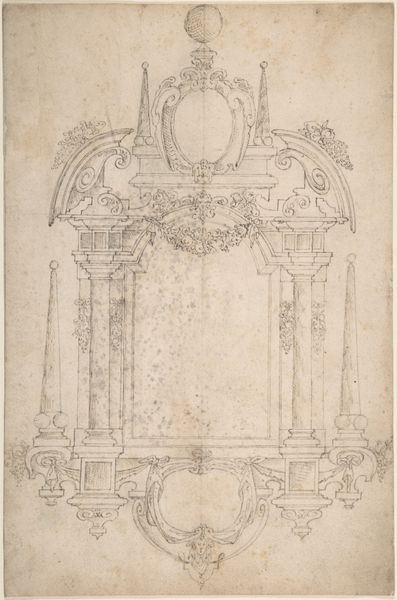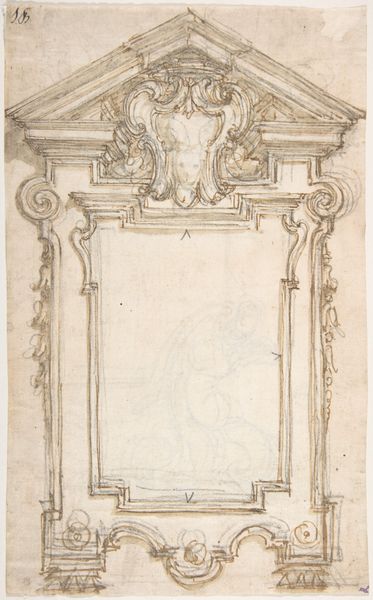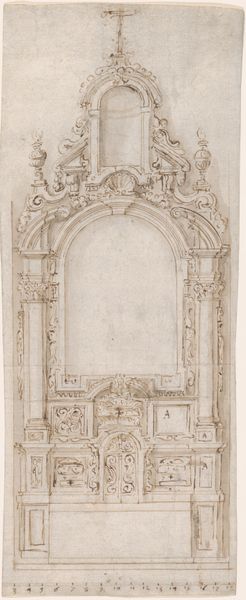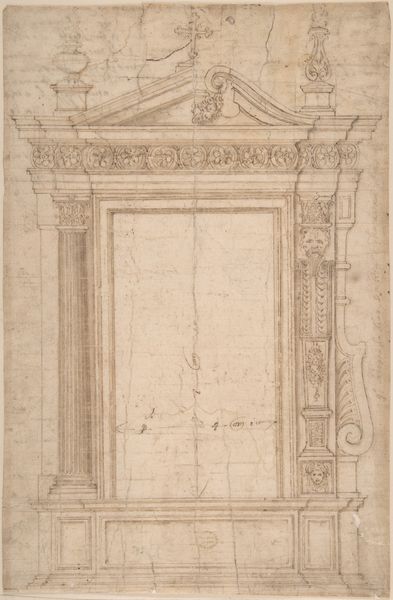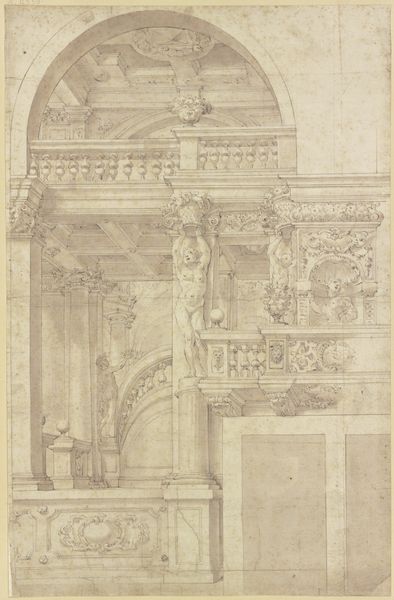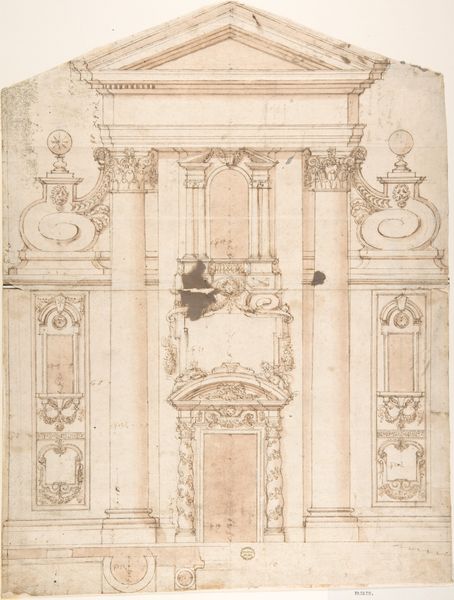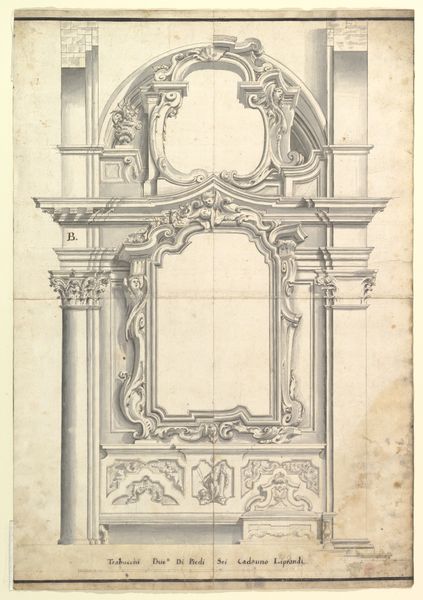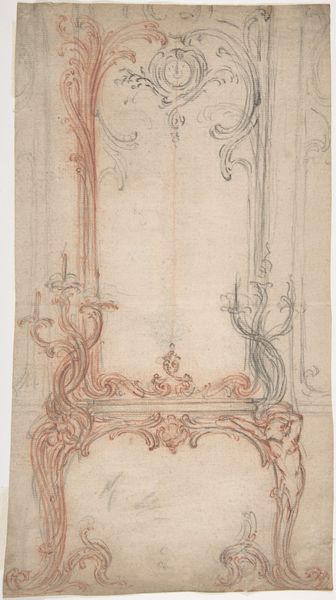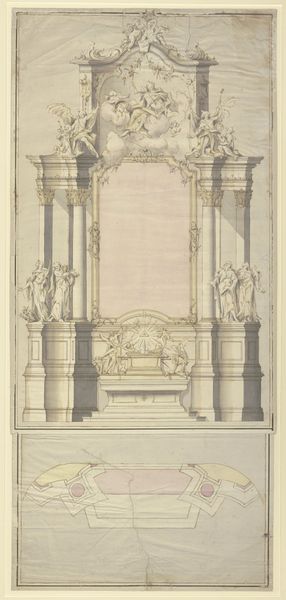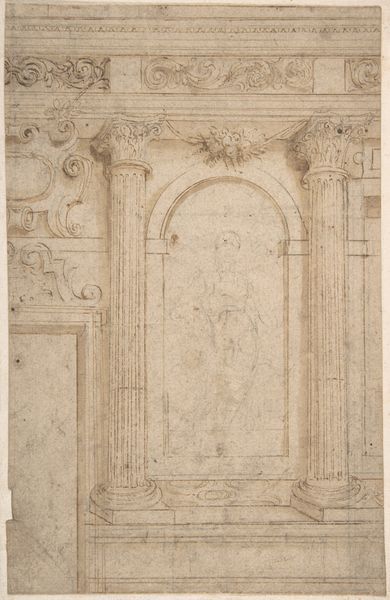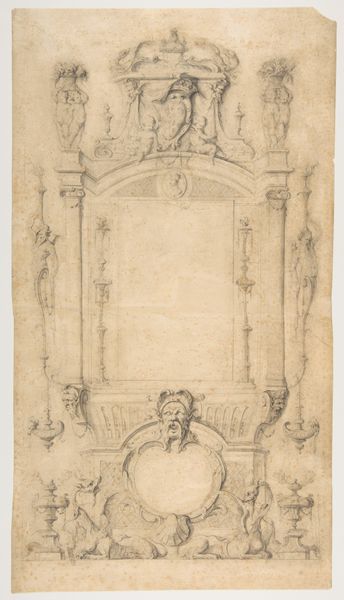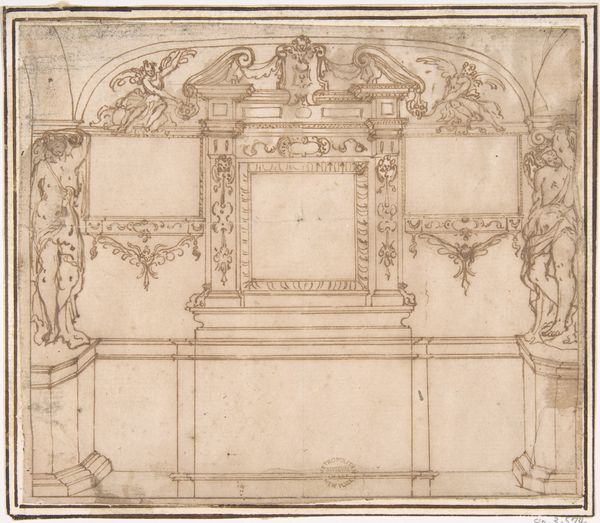
drawing, print, architecture
#
drawing
#
baroque
# print
#
form
#
line
#
academic-art
#
architecture
Dimensions: sheet: 19 5/8 x 11 in. (49.8 x 28 cm)
Copyright: Public Domain
Curator: This drawing is called "Design for an Altar: Two Halved Variants" from sometime between 1700 and 1780. It resides here at the Metropolitan Museum of Art. Editor: My first impression is the intense detail even within this preliminary sketch. It feels so intentional despite it simply being a plan. It's also quite rigid; the two halves make it look almost symmetrical. Curator: Indeed! Symmetry was crucial for creating a sense of balance and divine order within Baroque ecclesiastical spaces. It served to convey the seriousness of the place while echoing the mathematical perfections sought by Renaissance scholars. The symbols too speak volumes! Those cherubic figures hint at themes of innocence and divine connection, ubiquitous in this period. Editor: But whose innocence are we talking about? Baroque art often catered to elite patrons; consider the ways the Church wielded power, suppressing dissent and enforcing social hierarchies through opulent displays like these planned altars. How might marginalized groups have experienced these spaces? What place did women, the poor or enslaved populations have in such rigid structures? Curator: Those are critical questions! Thinking of these interiors as experienced, versus viewed as pure expressions of piety allows us to examine how architectural grammar shapes emotional space. These aren’t inert forms; they trigger visceral reactions within religious practitioners even today. It seems there is so much ornament meant to guide one’s thoughts… Editor: Exactly. The choice of color also influences emotion. Marble, or depictions of it as seen in the pinks and whites, suggests purity, luxury and perhaps unattainable divine spaces for some audiences. An architectural form itself has rhetorical power. What kinds of conversations were such altars trying to initiate or shut down in their time? Curator: Yes! By analyzing how this Baroque design repeats forms like arches and squares we uncover the ideological underpinnings, even if we do not know who made the work or where this specific altar might have stood. There’s still so much continuity in terms of shapes like pillars symbolizing support, not just in architecture, but for instance, within language. Editor: Well, it’s this type of visual vocabulary, if we may call it that, where an opportunity appears to unpack meanings! Perhaps what feels like the formality or even "purity" for some may read as restrictive exclusion for others, even today. This really opens the possibilities for further discussion of how people feel in spiritual and public spaces.
Comments
No comments
Be the first to comment and join the conversation on the ultimate creative platform.
